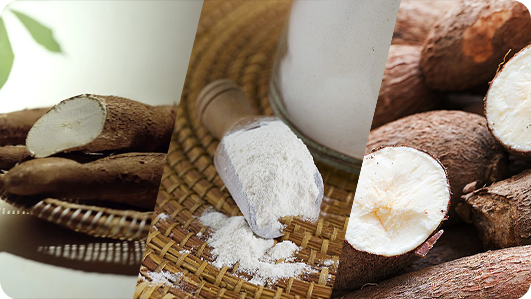EXPORTVN: Specializing in the production and export of Tapioca Starch
Welcome to EXPORTVN! We are proud to be one of the leading companies in the field of cassava starch production and export. Here are some highlights about us:
Top Quality: We are committed to providing high-quality tapioca starch, which is produced from fresh ingredients and has undergone a rigorous testing process.
Production Efficiency: Thanks to our state-of-the-art production facilities and automated processes, we ensure the production of tapioca starch with optimal performance.
Global Export: EXPORTVN has built an extensive export network, bringing our products to international markets.
Value Chain Integration: We not only produce tapioca starch, but also integrate the entire value chain from raw materials to final products.
Dedicated to customers: We always listen to and meet the needs of customers, accompanying them on the path of development.
If you are looking for a reliable partner in the field of cassava starch, contact us today!
EXPORTVN- Natural Ingredients for Healthy Foods.



"EXPORTVN" factory is a leading unit in the production and trading of cassava starch and cassava. We pride ourselves on our professionalism and commitment to bringing high-quality products to the market.
Highlights:
Superior Quality: Our factory adheres to strict quality standards, ensuring that cassava starch and cassava products reach high purity.
State-of-the-art technology: We use advanced production equipment and processes to ensure performance and safety.
Expert Team: The factory has a team of experienced technicians and experts, who are always ready to support and advise customers.
We look forward to cooperating with you and bringing the best value from our products. Thank you for your interest in "EXPORTVN"!


I have imported many cassava starch products from distributors, and I see that the products of EXPORTVN company are very reputable and of high quality. The product has a clear origin, I trust and cooperate in business.
EXPORTVN provides high-quality tapioca starch, in line with the requirements of the food industry. Dedicated and enthusiastic staff, who have been supplying starch to our sausage production during the past 5 years.
The quality of cassava starch products of EXPORTVN always meets the standards and is used by large food enterprises. We have been more economical and efficient when using their products.
I used tapioca starch from EXPORTVN for the production of mochi and instant noodles. The quality is stable and helps to strengthen the elasticity of the product.
I used EXPORTVN's tapioca starch to make mayonnaise. The product helps to create consistency and smoothness for the final product.
EXPORTVN provides a variety of cassava starch suitable for peanut coating, cake making and sauces. We are satisfied with their quality and service.